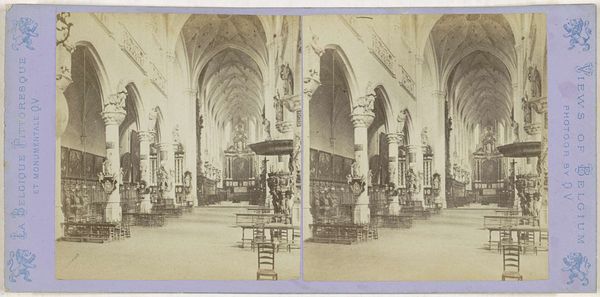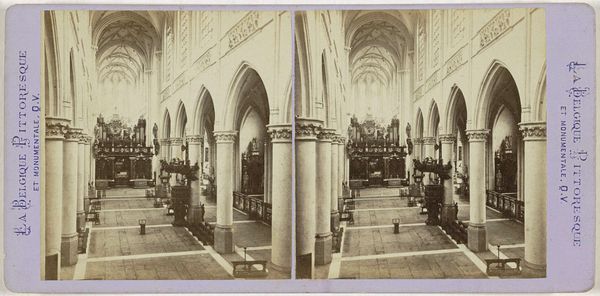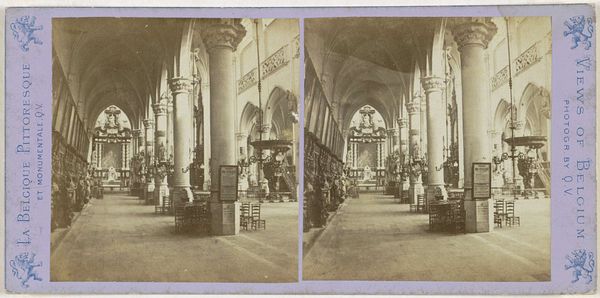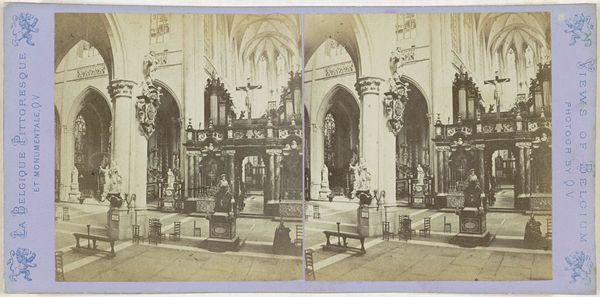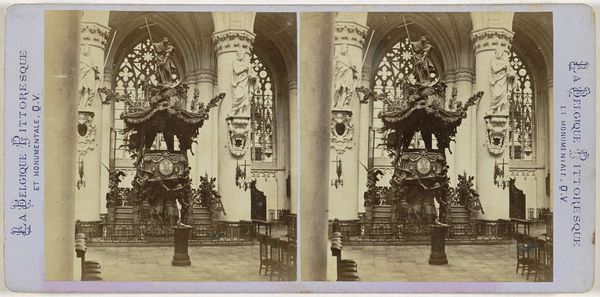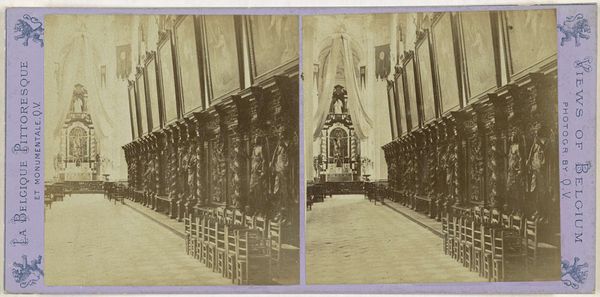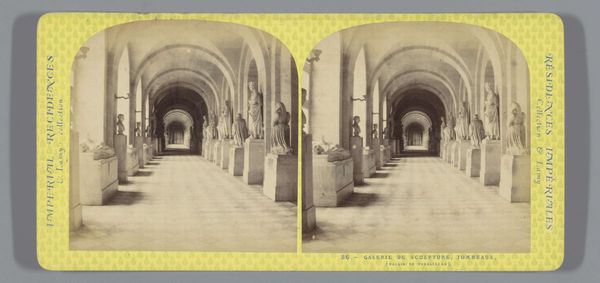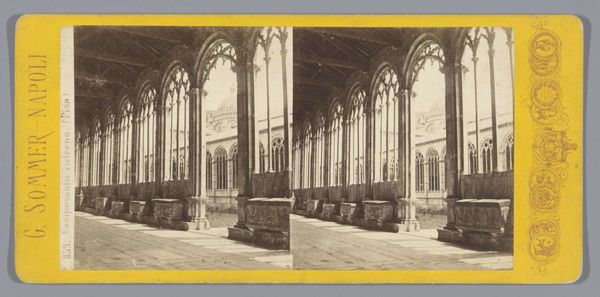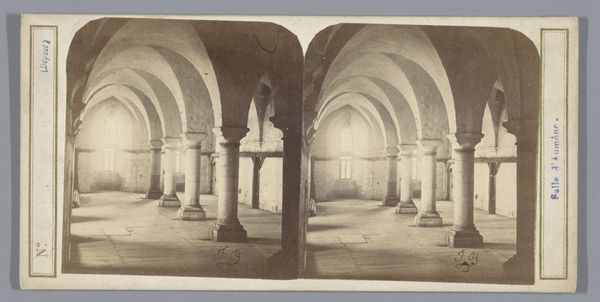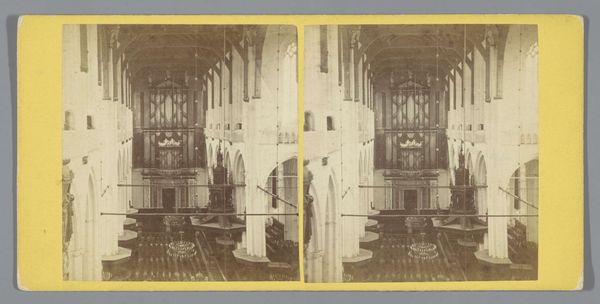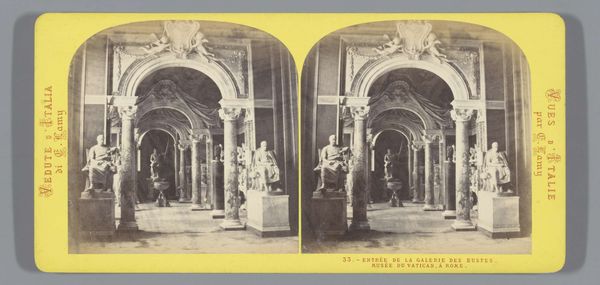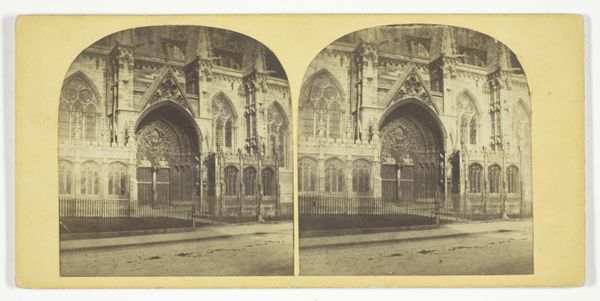
#
photo of handprinted image
#
aged paper
#
toned paper
#
historic architecture
#
traditional architecture
#
unrealistic statue
#
carved into stone
#
watercolour illustration
#
pencil art
#
watercolor
Dimensions: height 85 mm, width 176 mm
Copyright: Rijks Museum: Open Domain
Editor: So, this photograph is "Interieur van de Sint-Jacobskerk in Antwerpen" taken between 1866 and 1870 by Jules Hippolyte Quéval. It's currently held in the Rijksmuseum. The image itself has a sort of ethereal quality to it, almost like a memory fading into the past. What symbolic weight do you think these architectural images carried for viewers in the 19th century? Curator: The receding arches, the cool light… Indeed, this image functions almost as an archetype of sacred space, drawing heavily on centuries of architectural and spiritual symbolism. Think about the Gothic arch itself. What does it evoke? Editor: Ascent, reaching for the heavens… Curator: Precisely. And these churches, particularly in a rapidly industrializing world, represented stability, tradition, a link to the past, a sense of communal identity reinforced by rituals enacted within these walls. The image is sepia-toned. What impact might that have? Editor: The sepia gives it that 'aged' feeling. So, I guess it’s intended to give a viewer a sense of history or timelessness? Curator: It creates a distance but also an imagined intimacy. You are viewing something venerable, something enduring beyond the fleeting present. Now, consider the meticulous detail. Do you see a sense of truth? Editor: I see what you mean, yes! Although the statues appear “unrealistic,” perhaps due to deterioration, there's an honest recording of history embedded there. Curator: And those chairs, neatly arranged? They whisper of human presence, of countless ceremonies, personal devotions, marking the enduring presence and purpose of the church. It bridges time through sacred architectural symbolism. Editor: It's fascinating how a single image can hold so many layers of meaning. Thanks! Curator: My pleasure. Thinking about historical context alongside symbolic associations is incredibly useful.
Comments
No comments
Be the first to comment and join the conversation on the ultimate creative platform.
